Well-sited FM transmitter locations usually want some height above average terrain. This means either a tall tower or a high hill or mountain. Once a site is developed, co-location of other FM transmitters often happens because sites are expensive to develop. A second station can save money by using existing facilities.
For all those newly permitted LPFM stations; pay attention. If you are going to be co-located at an existing FM broadcast site, you may need to do this too.
Interference from intermodulation mixing products can develop when FM transmitting antennas are in close proximity. This is especially true with solid state, broadband PA commonly used in today’s VHF FM transmitters. Thus, when antennas are closely placed, external filtering is required.
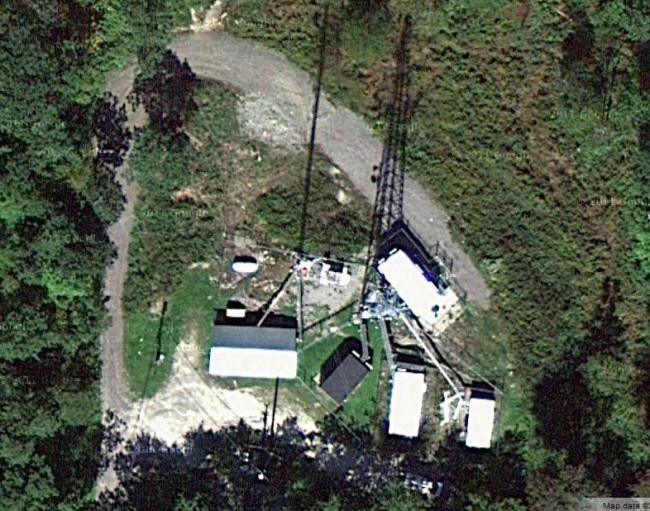
This is the case with a current project in North Adams, Massachusetts. New England Public Radio is placing WNNI on the air from the WUPE-FM site. WNNI is using one of those new Harris (now GatesAir?) Flexiva transmitters and WUPE-FM uses a Crown FM-2000A. The antennas are on separate towers, but the towers are in very close proximity, about 30 feet apart. In order to avoid any possible problems, a Shively 2602-3A-FB 3 pole filter was installed on each station. The filter is a bandpass for the station installed and a notch for the other station.
The primary concern here is mixing products between the two transmitters. Both have broadband solid-state amplifiers with low-pass filters before the output connector. There are three frequencies of interest;
- (F1 – F2) + F1 or (100.1 MHz – 98.9 MHz ) + 100.1 MHz = 101.3 MHz
- F2 – (F1 – F2) or 98.9 MHz – (100.1MHz – 98.9MHz) = 97.3 MHz
- F2 + F1 or 100.1 MHz + 98.9 MHz = 199 MHz
That, plus harmonic measurements out to three or four harmonics of the fundamental frequency should be enough to demonstrate compliance with FCC out-of-band emissions standards.
Measurements on these frequencies must meet the emissions standards outlined in FCC 73.317 (d), which states:
Any emission appearing on a frequency removed from the carrier by more than 600 kHz must be attenuated at least 43 + 10 Log10 (Power, in watts) dB below the level of the unmodulated carrier, or 80 dB, whichever is the lesser attenuation.
It is also noted that this site has several cellular carriers and no doubt has or will have LTE at some point. We all know that rural LTE installations can create self-induced problems, which are then conveniently blamed on the nearest broadcast station because, hey, why not?
To further complicate matters, New England Public Radio also has a translator, W266AW (101.1 MHz) on the same tower as WNNI. The same measurements noted above must be repeated for the translator.
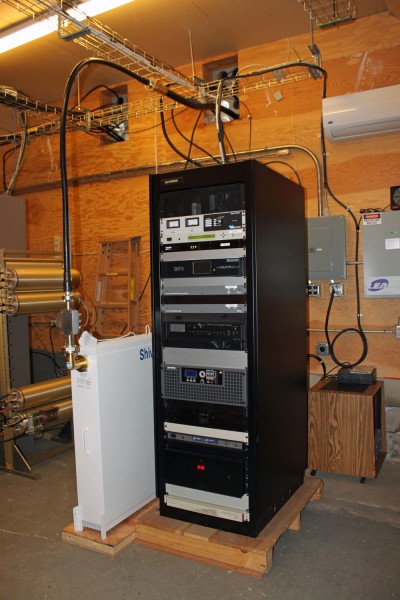
WNNI equipment rack. This is one of those new Harris (GatesAir?) Flexiva FM transmitters.
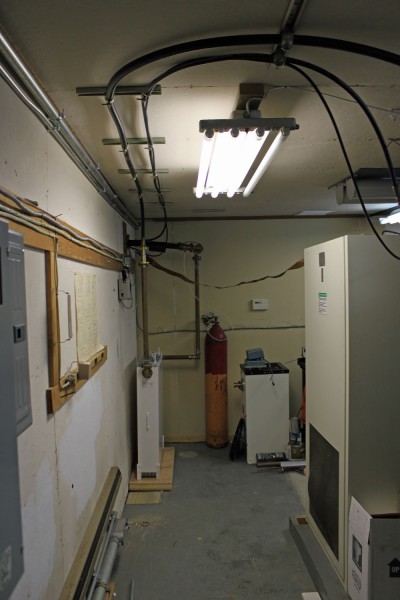
WUPE FM filter installation
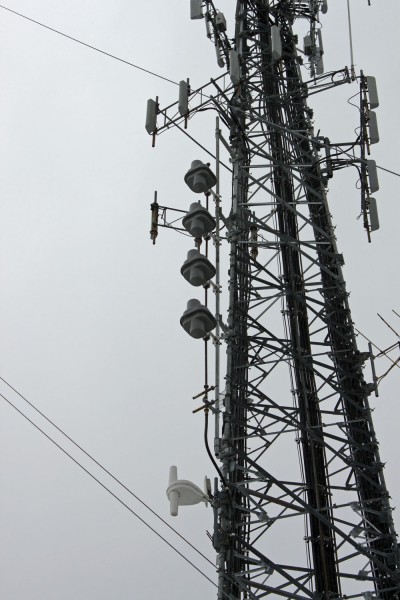
New WNNI antenna mounted on cell tower next to WUPE-FM tower. The W266AW translator antenna is directly below WNNI’s main antenna.
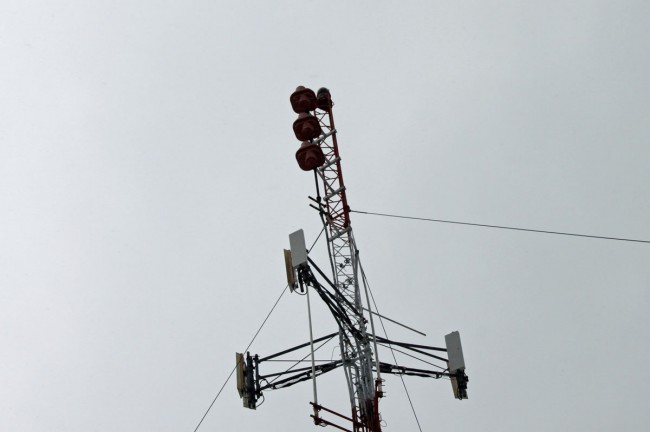
WUPE-FM antenna installed on the original broadcast tower. I believe the tower dates from 1959 or so.
It is important to get this type of installation right the first time. Creating interference all around or above the FM band is never a good strategy. Going back to ask for more funds to make something right is also highly frowned upon.


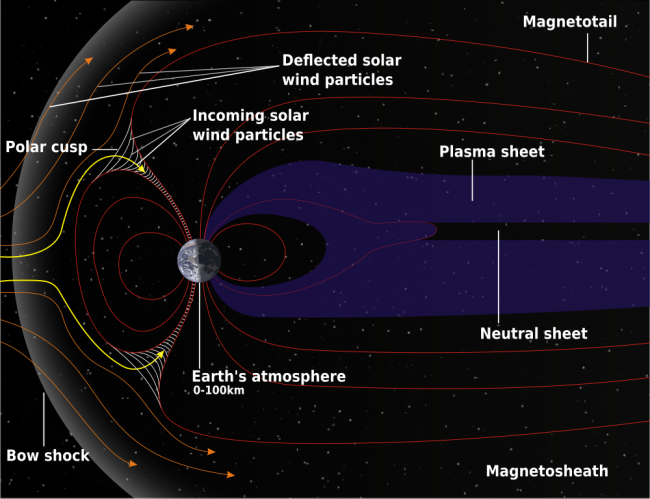
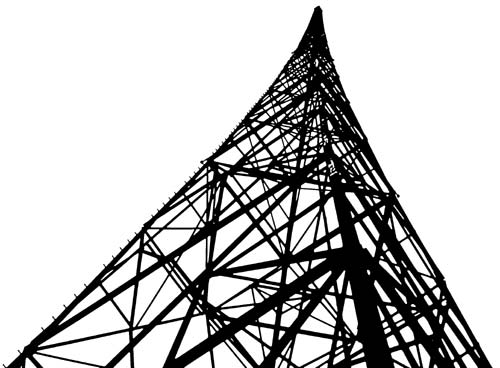

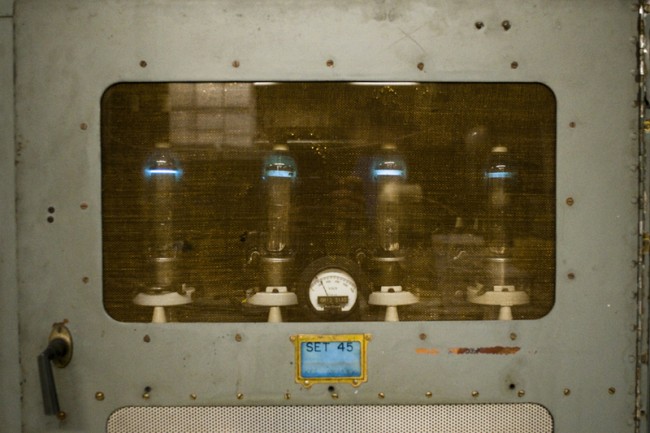
“In order to avoid any possible problems, a Shively 2602-3A-FB 3 pole filter was installed on each station”
It’s exactly ! Both stations must used filter (pass it’s on-air frequency and notch the other)
Looks like mother nature wasn’t very kind to the site over the last weekend of March 2014. After all that hard work, some towers fell in the wind and took the stations off the air, according to other web sites.
http://photos.berkshireeagle.com/2014/03/30/photos-of-toppled-communications-tower-on-florida-mountain#1